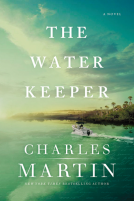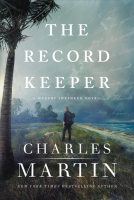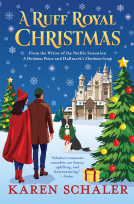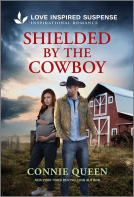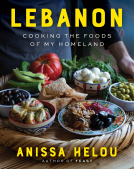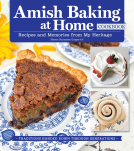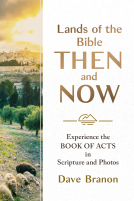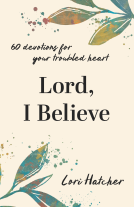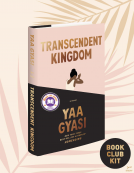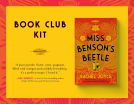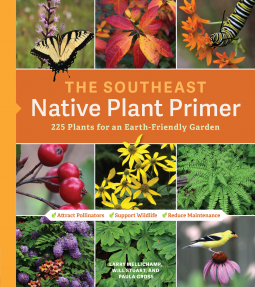
The Southeast Native Plant Primer
225 Plants for an Earth-Friendly Garden
by Larry Mellichamp; Paula Gross
This title was previously available on NetGalley and is now archived.
Send NetGalley books directly to your Kindle or Kindle app
1
To read on a Kindle or Kindle app, please add kindle@netgalley.com as an approved email address to receive files in your Amazon account. Click here for step-by-step instructions.
2
Also find your Kindle email address within your Amazon account, and enter it here.
Pub Date Jul 21 2020 | Archive Date Aug 31 2020
Talking about this book? Use #TheSoutheastNativePlantPrimer #NetGalley. More hashtag tips!
Description
Bring your garden to life—and life to your garden
Do you want a garden that makes a real difference? Choose plants native to our Southeast region. The rewards will benefit you, your yard, and the environment—from reducing maintenance tasks to attracting earth-friendly pollinators such as native birds, butterflies, and bees. Native plant experts Larry Mellichamp and Paula Gross make adding these superstar plants easier than ever before, with proven advice that every home gardener can follow. This incomparable sourcebook includes 225 recommended native ferns, grasses, wildflowers, perennials, vines, shrubs, and trees. It’s everything you need to know to create a beautiful and beneficial garden.
This must-have handbook is for gardeners in Alabama, Florida, Georgia, Mississippi, North Carolina, South Carolina, Tennessee, and Virginia.
Available Editions
| EDITION | Other Format |
| ISBN | 9781604699913 |
| PRICE | $24.99 (USD) |
| PAGES | 252 |
Average rating from 18 members
Featured Reviews
 Media/Journalist 16509
Media/Journalist 16509
This is a fantastic regional guide for gardeners and homeowners in the Southeast U.S. It gives descriptions and information on over 200 vines, shrubs, ferns, woodland flowers, full sun flowers and other native plants with beautiful full-color photos for each. They are divided by sections and include icons to easily let you know if they are good for beneficial insects, butterflies, hummingbirds, etc. There are also many helpful lists of native plants that are good for special situations like "hell strips" (the section by roads with bad dirt, low water, etc.), deer-prone areas, and much more.
The book goes into great detail about why native plants matter on all different counts. It also is a great resource for bird lovers who are finally realizing that if we want to keep birds from going extinct we must start planting food for their primary food source -- caterpillars -- that they especially need to feed their young. The tone is also helpful and friendly.
Beautiful photos also show how native plants enhance a wide variety of homes and gardens. My one complaint is that they rarely mention edibility or other uses even when they profile plants that I know are very helpful for food and/or medicine. I know this is a case of teaching only what you know well and also beyond the scope of the book, but another aspect of sustainability as homeowners and gardeners is that we can meet so many of our own needs with native plants too. I often felt when reading this book the way I feel when I see someone talked about publicly when I know their secrets. I understand the reasons, but I would love to see a book that told all of the ways plants help wildlife and people.
Garden zones are also not given, but that's because this book is for a specific region and all plants mentioned should work well in the appropriate areas of that region as long as you pay attention to their advice regarding sun, water, etc.
All that said, this is a fantastic resource. Highly recommended.
I read a temporary digital ARC of this book for the purpose of review.
This is a wonderful book. It's packed with information and tips for growing plants that are native to southeast. It is easy to understand and also tells how planting native plants are beneficial to birds. This is a book every gardener should have in their library. Thank you Timber Press via NetGalley for the ARC copy of this book. All opinions expressed are my own.
 Teresa N, Reviewer
Teresa N, Reviewer
Living in Florida with our hot wet summers and dry springs it is not always easy to figure out what to plant and when. This book gives you so many options it is hard to decide which way to go. This book is for Native plants, not Lowe's or other garden center's plants. It tells you about each plant, what they are good for, when to plant, how to plant, and even what plants to stay away from. The photography in the book is stunning. There are photo's of the plants, and photo's of different garden areas featuring some of the plants. This is a very useful, informative and beautiful book for the home gardener, especially if you want to keep it native.
I received this book from the Author or Publisher via Netgalley.com and chose to leave this review.
 Reviewer 658509
Reviewer 658509
Fantastic book! Beautiful photos and lots of tips and explanations about a wide variety of plants native to the southeast and how they're beneficial to birds. Everybody that is planning on having a garden should check this out. I like that there's a photo of each plant and informations about its size, best season and what type of environment it likes best. I received a free copy of this book from NetGalley in exchange for my honest review
The photography was lovely. I felt connected to each plant as I read through. Also feeling motivated to get near some trees especially.
If there ever was a time rethink our landscaping and plant native it's now. If you walk into a box store nursery I can tell you the majority of the plants there are not native, I know I worked in one for a few years. The basic landscapers you hire to landscape your yard will not plant native unless you ask them to and give them a list of native plants that work best for your garden. I had an argument with a botanist one day about nandinas she said they were native from Tennessee and I said no, they are not, they are from Asia. Needless to say, I couldn’t convince her so I moved on.
I believe over the years we have brought over so many plants from different worlds that we truly believe all plants are native, I know because I have thought every plant in the stores or nursery were all native, but they are not. I had to dig for myself to find out what is native and what is not by using books such as this one. The most important thing is we don’t realize is by taking away our native plants we are taking away our native bees, butterflies, birds.
I have been on a mission to rid my 1970’s nandina landscaping and planting native plants so I can create native habitat for my vesting birds, bees, etc so when this book popped up on Netgalley I just had to check it out.
This book is very simple to use and I love the bees, butterflies, or birds icon on each plant, it’s so helpful to someone looking to expand whichever species they want. You get beautiful clear images and enough detail on each plant, so you can pick out the plant that will work best for your garden. The book covers what is a native plant, garden as a habitat, and more.
 Reviewer 689165
Reviewer 689165
I received a complimentary copy of this book through NetGalley. Opinions expressed in this review are completely my own.
This book covers plants in the Southeast American states (Kentucky, Virginia, Tennessee, North Carolina, South Carolina, Georgia, Alabama, Mississippi, and Florida). This book is great to find out what is native to those states for garden information. There are abundance of beautiful pictures of plants in the book. This book also shows what plant will help feed and protect native animals. It also gives information of what season the plant grows, how tall, and where to plant it. If you are interested in the scientific name of plants, it also tells that. This book is the most informative book about plants. I would recommend this book whole heartily. Are you homeschooling? This book will be great for a plant unit study or a state book project. I hope they will make one for every region in the United States. This book is five star.
The Southeast Native Plant Primer is a gardening guide with herbal encyclopedia covering a plethora of indigenous plant species for gardeners in the southeastern USA. Due out 4th August 2020 from Timber Press, it's 252 pages and will be available in paperback and ebook formats.
As we learn more about the interconnectedness of local biomes and the desirability of supporting indigenous pollinators, plant, and animal species, more gardeners are moving to reduce or eliminate potentially invasive species and substitute with native species. This is a regional guide aimed at the southeastern USA and includes a huge variety of native plant species and their niche in the garden.
I liked the layout of the book which was very well organized and easy to follow. The introduction provides a good overview of native plants, why they're desirable for habitat and food for local species, how the choice of these species for our gardens actually benefits us as gardeners (less maintenance, suited to the climate and growing conditions already, hardiness), and more.
The plant primer takes up the majority of the page content and is split into plant types: Ferns, grasses, woodland wildflowers, sunny perennials, vines, shrubs, and trees. Each of the primer entries contains the botanical and some common names for the plant, habitat/soil conditions and culture requirements, active growing seasons and other special info, size, light requirements, a good description, and a clear picture. There are 225 species contained, enough to provide lots of alternatives for almost any garden role.The end of the book contains appendices which include a hardiness and climate chart, bibliography, good resources list, and index.
This is one of the better regional gardening guides which I've reviewed. Five stars.
Disclosure: I received an ARC at no cost from the author/publisher for review purposes.
 Librarian 431790
Librarian 431790
A great books that helped me to improve my gardening knowledge and discover new plants.
It's well written and informative, an excellent read for anyone who loves gardening.
Highly recommended.
Many thanks to the publisher and Netgalley for this ARC, all opinions are mine.
 Lexi S, Reviewer
Lexi S, Reviewer
This is a lovely and helpful book both for those who are planning a garden and those who just want to learn about native plants. The photos by the author were especially nice. The book is starts first with a general introduction and a discussion on why to plant native plants and their benefit to native wildlife, especially birds and pollinators (bees and butterflies). There are lists of common non-native plants and native substitutes. The rest of the book is then different native plants with pictures and descriptions of the plants. You would still need to talk to a local nursery or get another book for information about when to plant, how far apart and how deep. This is more of an overview to show the reader possibilities. My only major concern was the complete lack of information on toxicity. Some of these plants range from being mild emetics to very cardiotoxic. This is important information for anyone with a child, dog or livestock.
 Reviewer 677700
Reviewer 677700
Thank you for a copy of this book in exchange for an honest review.
I am a beginner gardener living in the Southeast United States, so this book is right up my alley so to speak. I need a primer on all the plants I already see around me, most of which I’ve become accustomed to my entire life. I now know names of recognized plants, trees, and flowers. I also know what helps those native plants grow well. Additionally, what I took away as a key insight from this book was the importance of the interactions between humans + environment, and the elements of the environment between themselves.
I learned quite a bit from this book and it accomplishes its aim of talking specifically about natives and southeast plants. It is written to be accessible, especially for new gardeners. Beginners will also enjoy high quality color photographs of plants + animals / wildlife that may be found enjoying the garden areas.
Very straightforward and informative.
 Georgene M, Reviewer
Georgene M, Reviewer
“The Southeast Native Plant Primer” is a superb new book that all gardeners will appreciate! Most gardeners know that growing native plants goes a long way to reducing routine maintenance tasks and attracting birds, butterflies, and bees. Here is a regional native plant book that lends confident, experienced help to choose and grow native plants that bring ideas to achievement.
As defined in “The Southeast Native Plant Primer,” the southeast region includes Alabama, North Florida, Georgia, Mississippi, North Carolina, South Carolina, Tennesse, and Virginia. Co-authors of “The Southeast Native Plant Primer” are seasoned botanists and horticulturalists Larry Mellichamp, Director of the University of North Carolina (UNC) Charlotte Botanical Gardens and Habitat Assessment and Restoration Program, Inc. (HARP) senior botanist, and Paula Gross a horticulture instructor at Central Piedmont Community College (Charlotte), and former associate director of the UNC (Charlotte) Botanical Gardens. The sharp highly-detailed and colorful photographs are the work of SC nature photographer Will Stuart.
The writing and language used in “The Southeast Native Plant Primer” are concise and straightforward, but most importantly is easy-to-read. The “Primer” is divided into three sections beginning with a scheme for the book. There is a lot of useful information in this section including discussions of native plant concepts and gardens as habitats. Choosing plants, keeping them growing, and skillfully using the book’s plant profiles round out this section. The middle section with plants recommended by Mellichamp and Gross is the meat of the book. Here are profiles with pictures of 225 plants divided among seven types that include ferns, grasses, spring ephemerals, perennial, and vines. The final section contains hardiness and heat zone charts, recommended reading, and resource lists. And to help gardeners plan garden exploration trips, there is a list of Southeastern Public Gardens with Significant Native Plant Collections.
This book is one of the finest regional native plant books this reviewer has critiqued. Simply put, there is a lot of excellent information in “The Southeast Native Plant Primer” presented in a manner that should leave gardeners, especially novices, feeling empowered instead of overwhelmed. It would make an excellent surprise gift for any gardener in one of the eight states described as the southeast.
I received an Advanced Review Copy of this book by the publisher Timber Press via Netgalley in exchange for an honest review.
 Reviewer 284405
Reviewer 284405
The Southeast Native Plant Primer by Larry Mellichamp and Paula Gross is a collection of plants perfect for those living in the southeast. It is packed with information on everything from grasses to trees. I love that each plant had detailed growing information including where to plant and the growing conditions. This is a wonderful guide for those new to the region as well as those who have lived there all their lives.
I really enjoyed this guide to gardening with native plants in the southeastern US. The authors provide charts with helpful suggestions, such as what to plant to attract bees and butterflies, and what substitutions to make for invasive species. The authors' tone is very friendly and approachable, so whether you are a novice or an experienced green thumb, you feel like part of a club.
Thanks to the publishers and NetGalley for the opportunity to review a digital ARC in exchange for an unbiased review.
Readers who liked this book also liked:
Rachel Joyce
Historical Fiction, Literary Fiction, Women's Fiction

